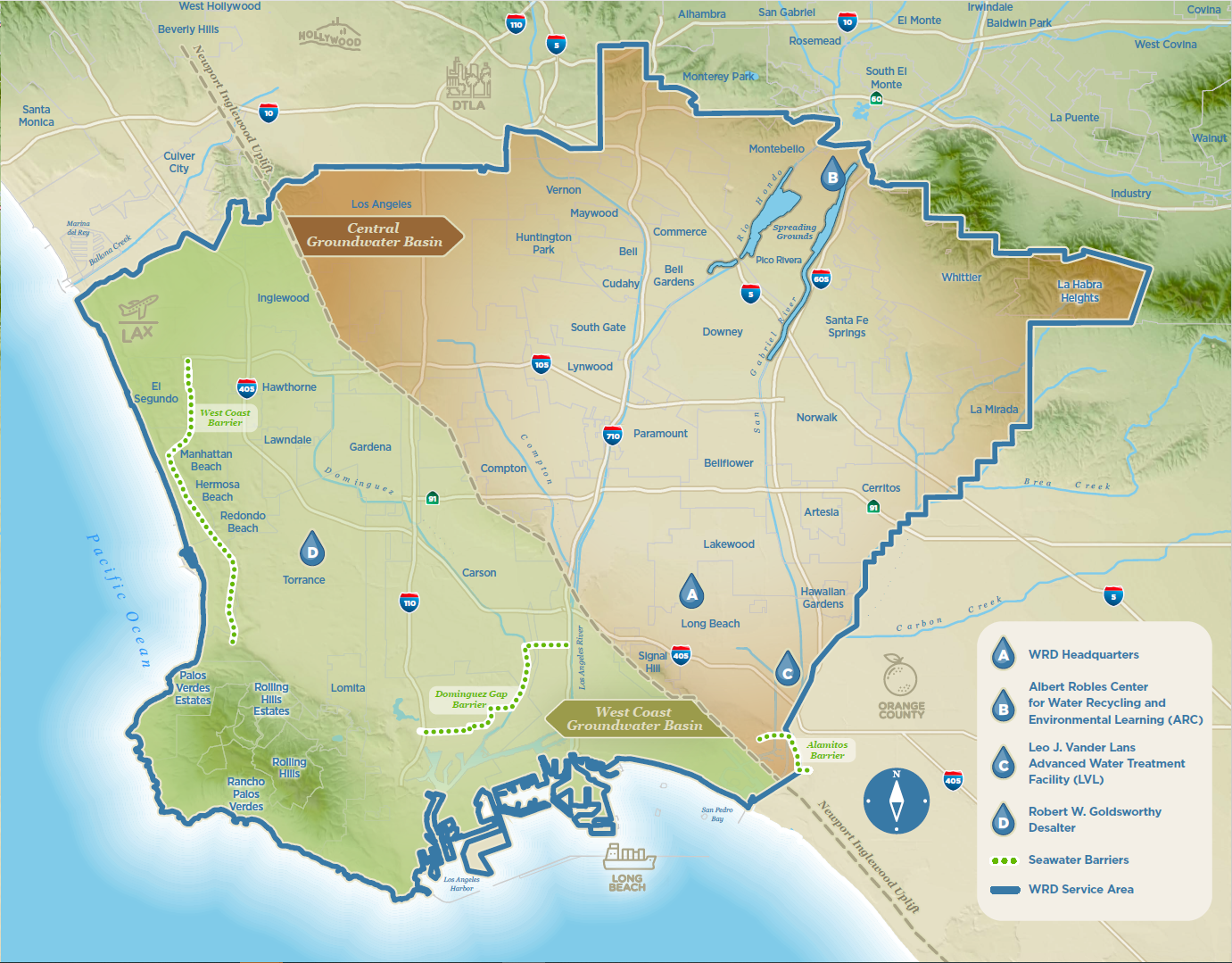STATE OF THE WATER: An in-depth look at how the 2023 wet season has affected water supply in some of LA County’s largest basins
Guest Blog by the Water Replenishment District
This blog is the third of a four-part series. You can read part one here. And part two here.
A GREAT YEAR FOR REPLENISHMENT!
Stormwater Capture Updates for the LA Basin
A Record Year for Precipitation
After some of the driest years on record, California finds itself at the opposite end of the boom-and-bust cycle of a prolonged drought that has come to characterize the State’s water resources. While this climate whiplash has caused storm damage and fears of spring snowmelt flooding, it’s also provided one of the best years for groundwater replenishment in decades. Locally, the storms of 2022/2023, resulted in the LA area receiving much higher-than-normal rainfall amounts, as well as an abundance of snow in some of our local mountains.
This has been good news for the Water Replenishment District (WRD), the groundwater management agency responsible for the Central and West Coast Basins in southern Los Angeles County.
WRD serves a population of four million people residing in 43 cities. Residents in the WRD service area consume around 72 billion gallons, or 220,000 acre feet, of groundwater annually and this accounts for about 50% of their water demands.
As outlined in the monthly WRD Groundwater Basin Update, the WRD Precipitation Index reports that for the current Water Year, there has been 25.64 inches of rainfall in the WRD service area through May 5, 2023—this is 172% of normal.
WRD’s Precipitation Index is released monthly in its Groundwater Basin Update and covers precipitation in the WRD service area of southern Los Angeles County.
Regionally, the dams within the San Gabriel Watershed have also benefitted. For example, at the end of March 22, 2023, the Cogswell, San Gabriel, and Morris Dams were at 104%, 85%, and 73% capacity, respectively. The steady release of water from these upstream reservoirs is expected to continue flowing through the summer, providing a continued source of recharge to our groundwater basins.
So far, local stormwater capture has resulted in approximately 49 billion gallons, or 150,000 acre-feet, of recharge through May 2023. This is one of the best years of recharge we have experienced in over 60 years!
Water travels through the San Gabriel River Water Conservation System to the lower lying San Gabriel and Rio Hondo Spreading Grounds where the sub-surface sediment can hold a large volume of water.
Getting Water into the Ground
WRD works with regional partners including the Los Angeles County Public Works (LACPW) to get water into the ground using two important county-owned infrastructure systems: the San Gabriel and Rio Hondo Coastal Spreading Grounds in the City of Pico Rivera, and the Seawater Barrier Injection Wells located along the LA County coastline. During the rainy season, the spreading grounds allow for water to soak in at a rate up to 256 million gallons (1,400 acre feet) per day and 13 billion gallons (42,000 acre feet) per month.
Photo of the LA County Department of Public Works Rio Hondo Spreading Grounds in the City of Pico Rivera, CA
While this series’ first blog notes that a portion of the region’s stormwater is lost to the ocean each year, WRD and its partners at LACPW have been able to capitalize on the abundant rainfall from this season and get large volumes into the ground.
By diverting as much stormwater as safely possible into the spreading grounds, the WRD service area has replenished around 49 billion gallons (150,000 acre-feet) of stormwater through May 2023. That is a year’s worth of water for about 200,000 families of four! This would not have been possible without the dedicated work of LACPW, and the totals are still expected to increase substantially once they release more data.
Healthy Basins Create Resiliency
By recharging higher than average volumes this year, the groundwater basins are on the rebound. WRD reports on the health of the basins by monitoring over 350 groundwater wells throughout the year.
The current WRD basin operating range is at 95% of Optimum Quantity levels as of May 2023. This means we are well positioned to sustain current groundwater pumping rights and leaves room for future storage projects. This is a drastic change from less than one year ago when the basin was only at 20% of Optimum Quantity.
Even with the basins at Optimum Quantity, there remains roughly 145 billion gallons, or 450,000 acre-feet, of storage space with the Central and West Coast Basins. WRD’s current projects and programs seek to utilize this storage space with as much water as possible for use in future dry years.
Similarly, more stormwater capture and treatment programs such as the Safe Clean Water Program are also underway. These programs will continue to add to the water portfolio of a region that is fortunate to have local groundwater aquifers to depend upon as we navigate the new apparent normal of climate whiplash.






